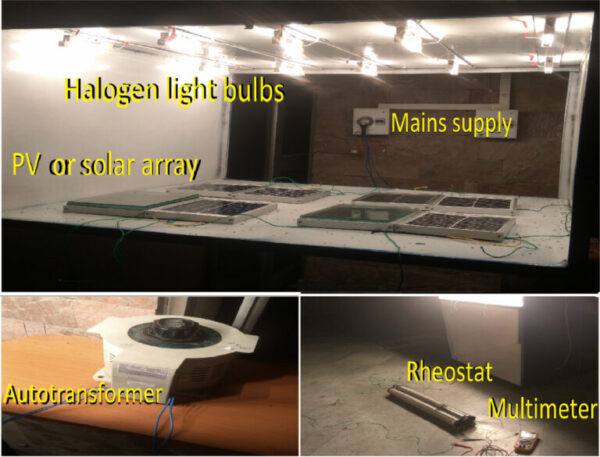Scientists from the Indian Institute of Technology Guwahati and the Shiv Nadar University in India have developed a new algorithm for the calculation of the global maximum power point (GMPP) of a partially shaded PV array.
“This algorithm is designed to be adaptable to any scenario derived by setting certain parameters in the generalized series-parallel PV array model,” the research’s corresponding author, Shashank Kumar, told pv magazine. “It’s important to note, however, that it may not be directly applicable to configurations that cannot be converted into this generalized model.”
The GMPP defines the ability of an inverter to sweep the IV curve of a PV system and identify the array voltage at which the global maximum power point occurs. When a PV system is under partially shaded conditions, its output power-voltage characteristic curve generates multiple local peaks. Under these conditions, the conventional MPPT methods could fail to maximize the output power as they track the local maximum power point (MPP) instead of the global MPP (GMPP).
In the study “A novel GMPP estimation technique for series parallel connected partially shaded PV array,” published in Solar Compass, the researchers explained that an accurate estimation of the GMPP of a solar power generator under partially shaded conditions is more difficult to achieve than under uniform irradiance conditions, due to the presence of multiple peaks or local maximum power points (LMPPs) in the power-voltage curve.
The proposed method utilizes PV module parameters such as connecting wires and diodes, as well as irradiance and temperature as input data.
It also uses a series of equations to find and sort all of the relevant zero points of the PV array. “It could be said that zero-points approximate the points where the 𝑃 − 𝑉 or 𝐼 − 𝑉 curve of the array changes its shape due to partial shading condition,” the academics explained.
The novel approach also offers a mathematical expression for the iteration voltage based on a generally observed property of LMPPs.
To test the new technique, the researchers ran 2,000 randomly generated partially shaded cases over their generalized model. Half of the cases looked at a 3 x 2 PV array using 252 W modules, with the other half referring to a 4 × 2 PV array with the same modules.
“In 3×2 PV array irradiances of all 6 modules are generated randomly in the range of 100–1100 𝑊 ∕ 𝑚 2 for every single case of 1,000 cases. All the diodes and modules in 3 ×2 PV array are at the temperature of 25 C,” the scientists added. “All the parameters of diodes and temperatures of 4×2 PV array are different, however, irradiances of 8 modules are randomly generated in the range of 100–1100 𝑊 ∕ 𝑚 2 for every case of 1000 cases.”

Image: Indian Institute of Technology Guwahati, Solar Compass, Creative Commons License CC BY 4.0
The researchers found that, in all of the 2,000 simulated cases, the maximum errors and the root mean square (RMS) errors were less than 1%. For the 3 × 2 PV system, the average computational time for each case was 0.3398 seconds. For the 4 × 2 arrays, that time was 1.23 seconds.
To validate their results, the scientists also built an experimental setup and compared their observations from it with the algorithm fed with the same data. “It is seen that the error in the GMPP power obtained using the proposed method is 2.5706% with respect to the GMPP obtained experimentally, which is well within the limit,” they concluded.
“Future enhancements are in the pipeline for the GMPP estimation method. My aim is to develop a more compact formula for GMPP specifically tailored for this generalized model,” Kumar stated.
This content is protected by copyright and may not be reused. If you want to cooperate with us and would like to reuse some of our content, please contact: editors@pv-magazine.com.








By submitting this form you agree to pv magazine using your data for the purposes of publishing your comment.
Your personal data will only be disclosed or otherwise transmitted to third parties for the purposes of spam filtering or if this is necessary for technical maintenance of the website. Any other transfer to third parties will not take place unless this is justified on the basis of applicable data protection regulations or if pv magazine is legally obliged to do so.
You may revoke this consent at any time with effect for the future, in which case your personal data will be deleted immediately. Otherwise, your data will be deleted if pv magazine has processed your request or the purpose of data storage is fulfilled.
Further information on data privacy can be found in our Data Protection Policy.